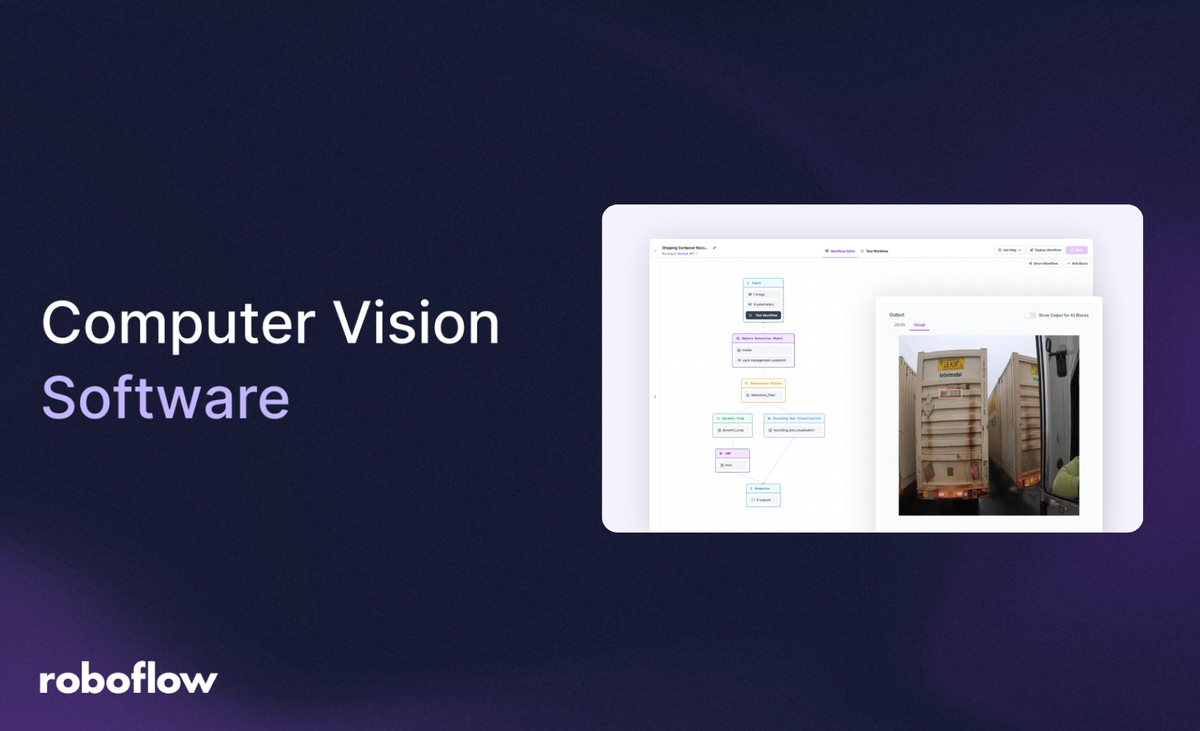
Computer vision is the first technology that fundamentally allows us to rewrite human-computer interaction. Until now, when using computers to interact with the world, humans would assess their environment, provide commands to a computer, and then receive an interpretation.
Computer vision flips that script; computers can now interact directly with the world around us without a human in-between. This is what gives rise to autonomous vehicles and the technology that identifies cancerous skin lesions more accurately than world-leading doctors.
In short, computer vision is the ability for a computer to see and understand the physical world. With computer vision, computers can learn to identify, recognize, and pinpoint the position of objects — driving real change in the real world. Computer vision software can be used to inspect label compliance, track process execution, monitor traffic, and optimize a warehouse's footprint. As just one example, a Roboflow automotive manufacturing customer saved $8 million by automatically detecting defects on their production line.
Today, everything you need to build and deploy computer vision applications exists. Computer vision software empowers businesses to create datasets, train models, and deploy to production — shaping the future.
Here we'll reveal how to get the most from computer vision software, and join the businesses already integrating vision AI and gaining market share.
How to Use Computer Vision Software
Computer vision software helps companies label, train, and deploy computer vision solutions across their organizations. Let's walk through each step.
1. Create a dataset for computer vision
In order to use data to solve a problem, you must gather data to do it! For computer vision, this data consists of pictures and/or videos. You can supply your own imagery, such as from livestream cameras in your facility, or use existing imagery from research datasets. To make it simple to get started, Roboflow Universe hosts over 200,000 open-source datasets.
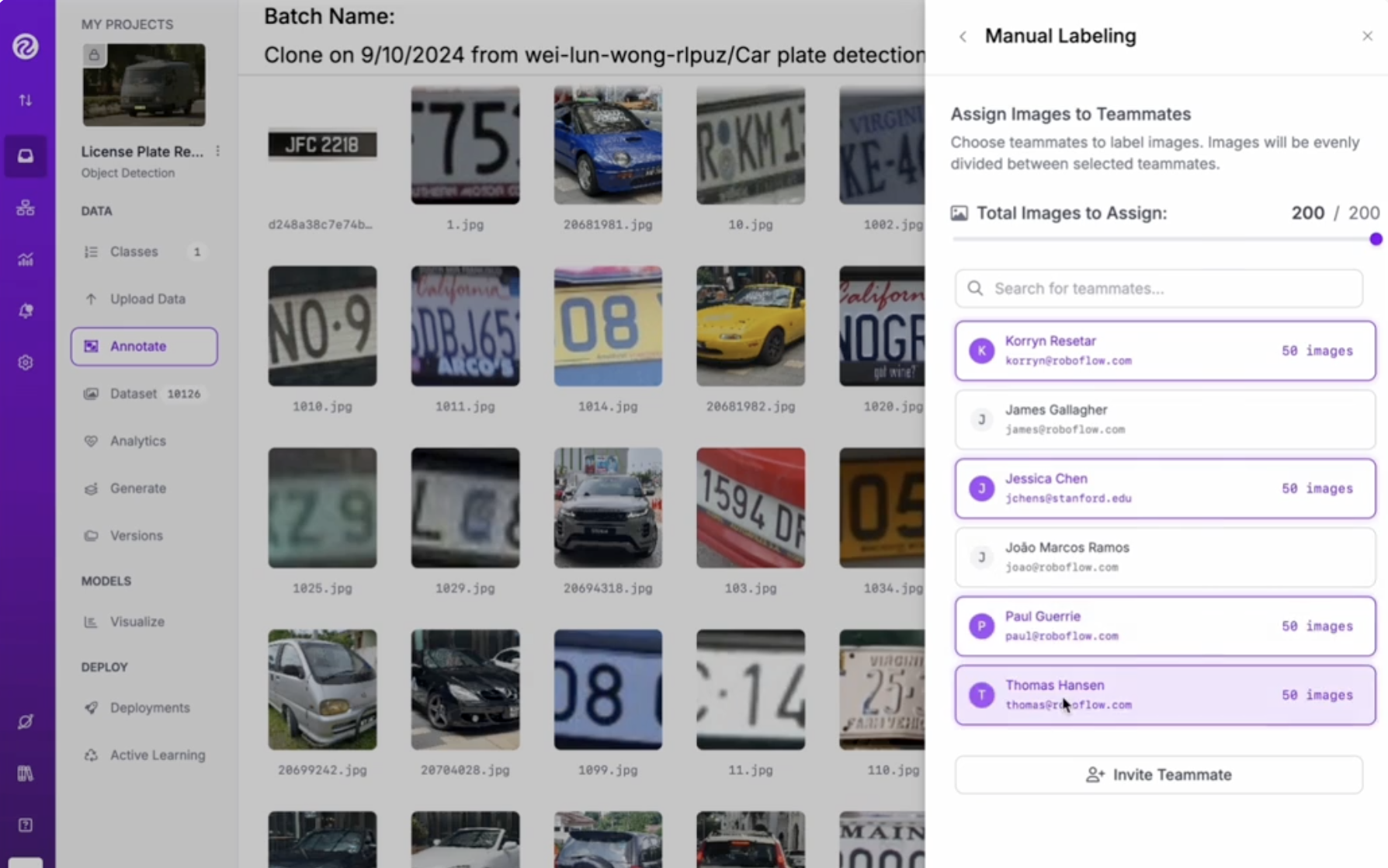
2. Label images for computer vision
Once you have your data, you need to label it for object detection, classification, and segmentation tasks. Roboflow Annotate can help you do that, as it comes with a powerful AI features that can automatically annotate images in your dataset.
Roboflow also offers Auto Label, an automated labeling solution, empowering you to use foundation models like Grounding DINO and Segment Anything to automatically label images in your dataset.
Annotate also includes the capability for image augmentations. Image augmentations are manipulations applied to images to create different versions of similar content in order to expose the model to a wider array of training examples. For example, randomly altering rotation, brightness, or scale of an input image requires that a model consider what an image subject looks like in a variety of situations.
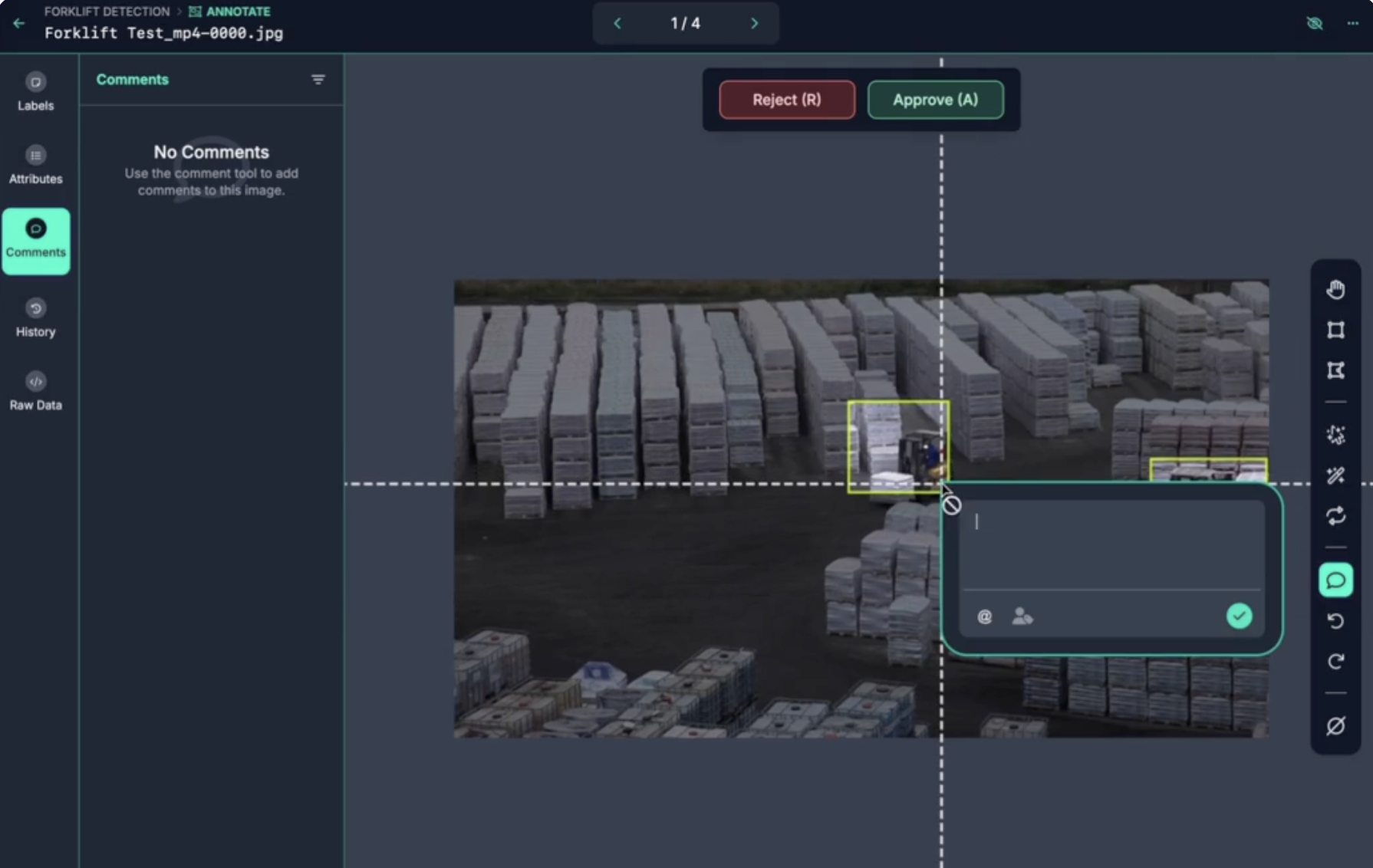
3. Train a computer vision model
Next, it's time to build a model with Train, to enjoy hosted training for state of the art models, customized for your dataset, in no time. You'll even get insights into how your vision models are performing to locate edge cases, anomalies, and areas of low performance.
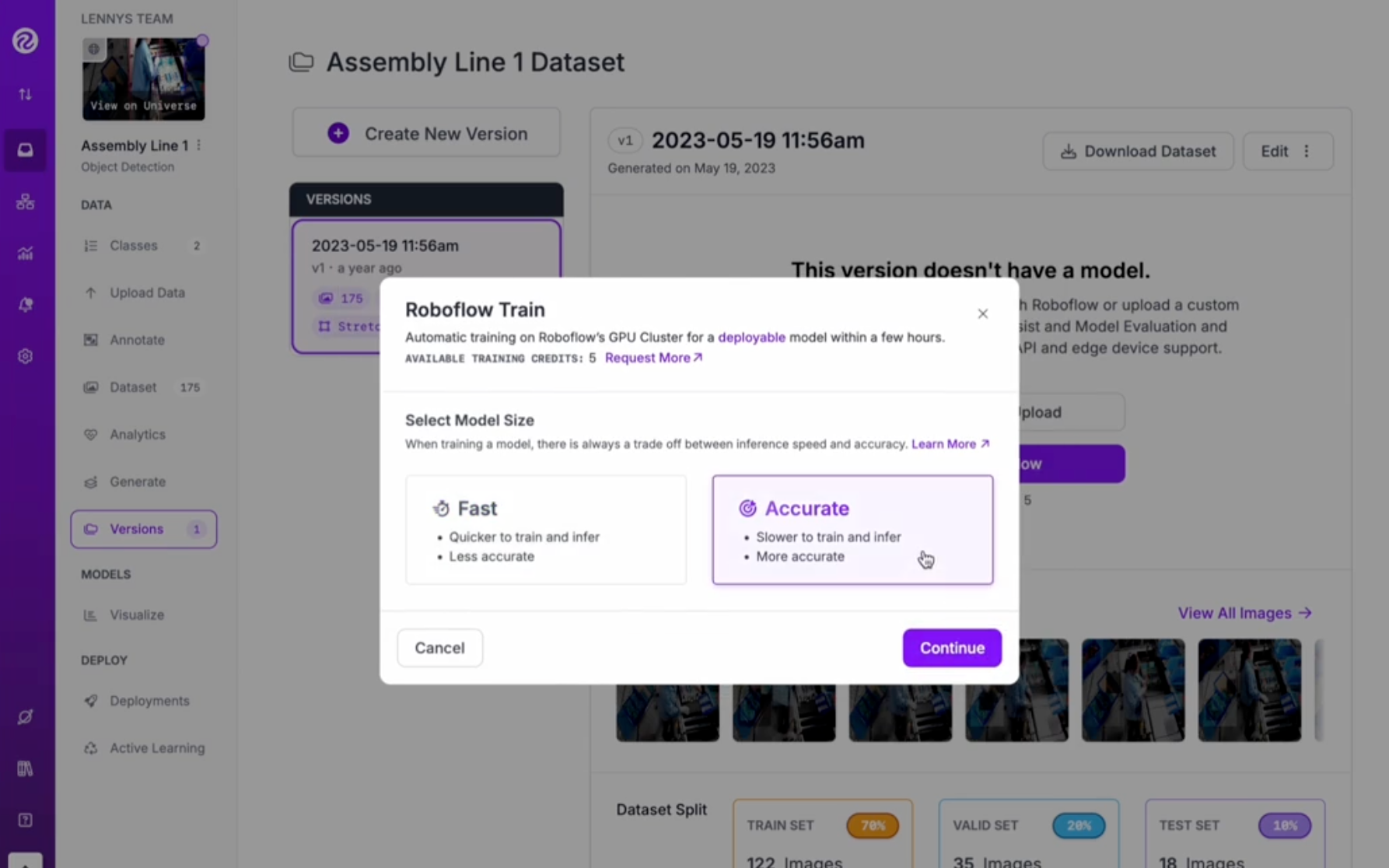
4. Deploy computer vision models
Training the model isn't quite the end though – you probably want to use that model in the real world. In computer vision, we call that inference. So the next step is to prototype, experiment, test, integrate, and deploy pipelines to production, using Workflows. And then Deploy, integrating custom or foundation models into your toolset and codebase.
Deployment usually lives in the cloud or at the edge. Cloud deployment means the model runs on a cloud server and is called via an API. Edge deployment means the model runs on an edge device and inferences are run directly on the device.
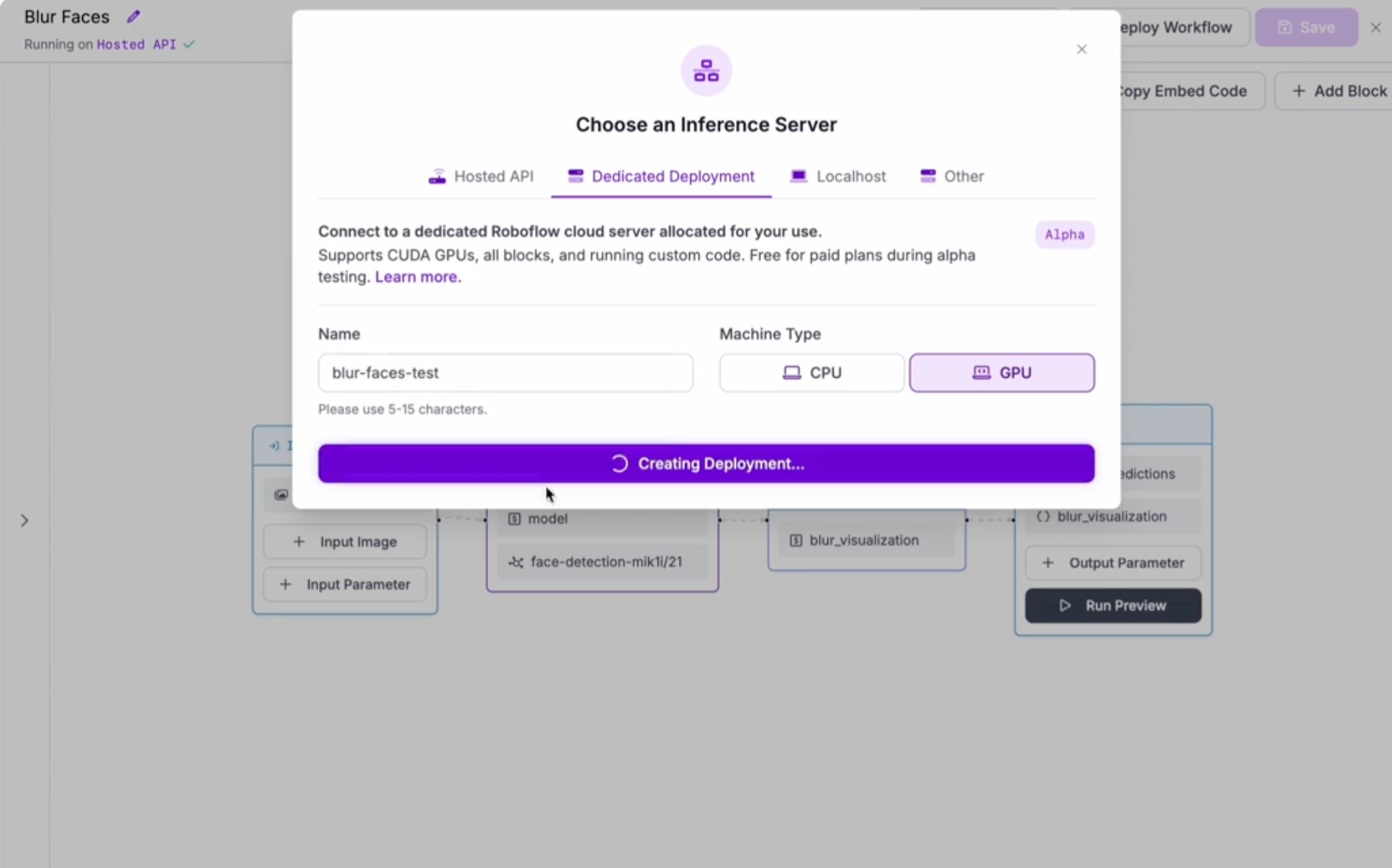
The benefit of using Roboflow Train and Roboflow Deploy is that we make it easy for you to test deployment options, change deployment options, or use multiple deployment options in your application.
Get started with Roboflow for free.
Real Computer Vision Software Examples
Not sure how to use computer vision software for your business? From defect detection and streamlining aerospace operations to quickly verifying government documents, and even automating security procedures for oil rigs, the many uses of vision AI continue to expand. Explore 50 real-world use cases of computer vision software including:
- Counting people (or objects) in a zone
- Tracking athletes playing football
- Measuring liquid levels in glasses
- Creating a self-serve checkout
Helpful Computer Vision Tools
While you no longer need a machine engineering background for computer vision projects, finding the right computer vision tools and platforms can be overwhelming.
Discover a variety of the best computer vision tools that meet a mix of needs within the space. From end-to-end solutions like Roboflow to specialized libraries like OpenCV and TensorFlow, to cloud-based APIs like Amazon Rekognition and Google Vision AI, and even a CV library by NASA, see what each has to offer, helping you make an informed decision.
Discover the Best Computer Vision Models
Computer vision models are trained to recognize patterns and make accurate predictions. Through trial, error, and self-correction, the computer can start to associate specific features with an object - such as a basketball, transforming that knowledge into mathematical equations that then help it recognize basketballs in images it hasn’t seen before. Of course, your solution will only be as good as your model is accurate. Some of the best classification, object detection, and segmentation computer vision models today are:
- Segment Anything (SAM) is an image segmentation model developed by Meta Research, released in April 2023, capable of doing zero-shot segmentation.
- YOLOv8 is optimized for speed. The state-of-the-art YOLOv8 model, created by Ultralytics, the developers of YOLOv5. launched on January 10, 2023, and comes with support for instance segmentation tasks.
- Grounding DINO is a zero-shot object detection model made by combining a Transformer-based DINO detector and grounded pre-training.
- PaliGemma, released at the 2024 Google I/O event, is a combined multimodal model based on two other models from Google research: SigLIP, a vision model, and Gemma, a large language model, which means the model is a composition of a Transformer decoder and a Vision Transformer image encoder. It takes both image and text as input and generates text as output, supporting multiple languages.
- GPT-4o is OpenAI’s third major iteration of GPT-4 expanding on the capabilities of GPT-4 with Vision. The newly released model is able to talk, see, and interact with the user in an integrated and seamless way, more so than previous versions when using the ChatGPT interface.
Explore more state-of-the-art computer vision model architectures, immediately usable for training with your custom dataset on Roboflow.
Get Started with Computer Vision Software
Visual understanding is a primitive that nearly every company will use. Enterprises have petabytes of underutilized visual assets. Millions of cameras are deployed globally. Billion dollar startups are being built in markets that didn’t exist five years ago thanks to computer vision. And Roboflow is proud to power them.
Roboflow is free to get started and easy to scale up. We’re SOC 2 Type II compliant, support custom security rules, and power customers operating at global scale with terabytes of data today. Learn more about how Roboflow Enterprise can bring computer vision solutions to your business. Talk to an AI expert to discuss your unique use cases.
Cite this Post
Use the following entry to cite this post in your research:
Trevor Lynn. (Feb 13, 2025). Computer Vision Software. Roboflow Blog: https://blog.roboflow.com/computer-vision-software/
